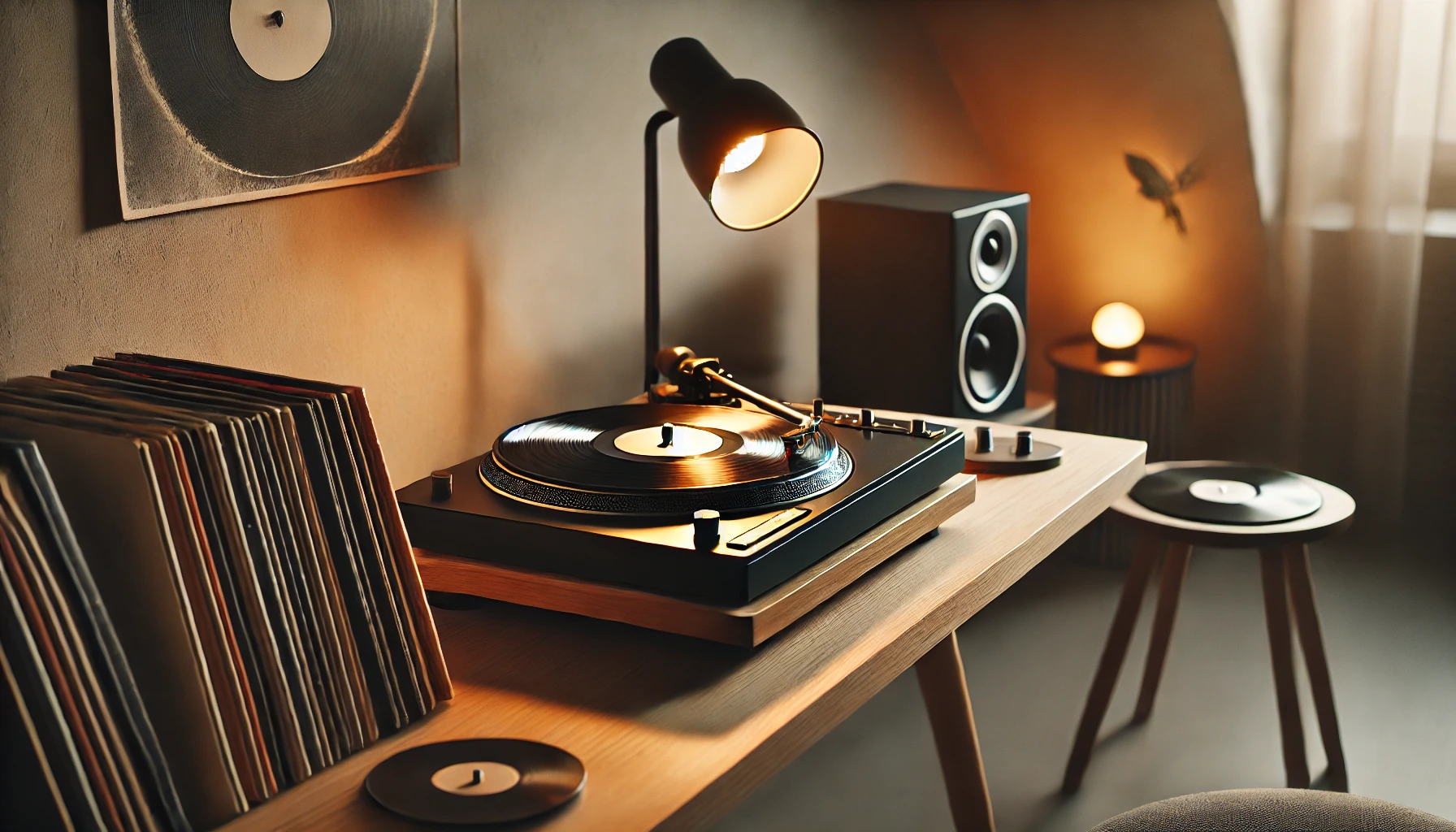Hey there, vinyl enthusiasts and curious music lovers! Today, we’re diving into the world of turntables – those magical machines that bring our beloved records to life.
As someone who’s been tinkering with audio gear for years, I’m excited to share my knowledge and experiences with you. So, grab a cup of coffee, and let’s explore the ins and outs of turntables together!
What is a turntable?
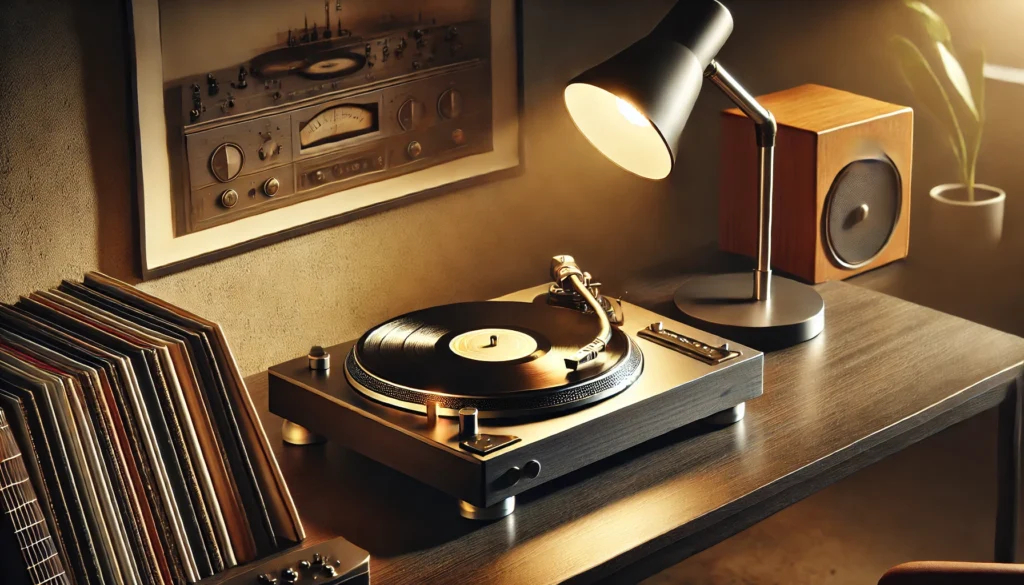
A turntable is a device designed to play vinyl records by spinning them on a circular platter and using a needle (stylus) to read the grooves, converting the physical information into an electrical audio signal.
It consists of key components like the platter, tonearm, cartridge, and motor, working together to reproduce the music stored on vinyl discs.
Turntables are prized by audiophiles for their ability to deliver warm, high-fidelity sound from analog recordings.
In the following sections, we’ll delve deeper into the fascinating world of turntables and their role in music playback.
Components of a Turntable
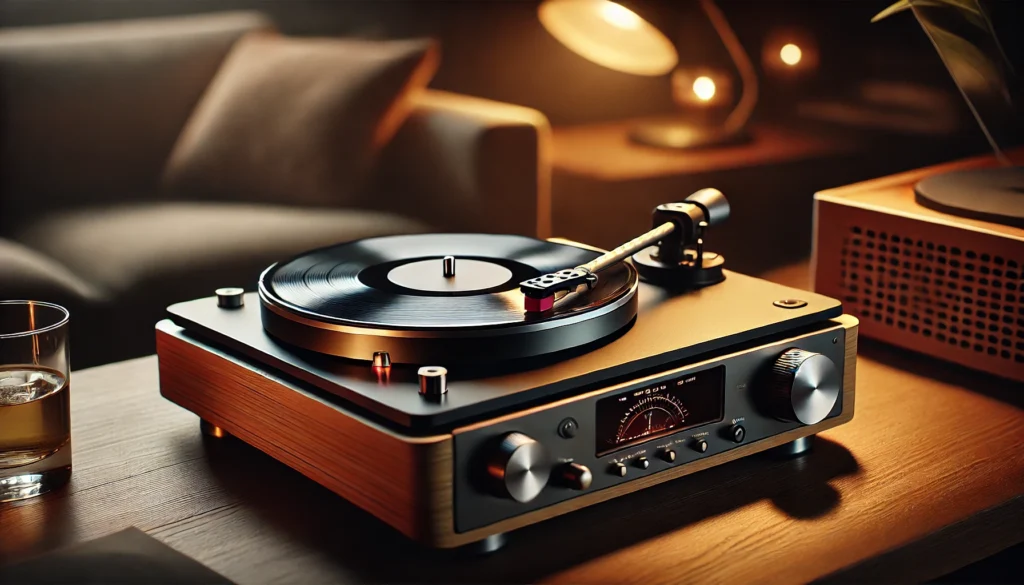
Alright, let’s break down the main parts of a turntable. Trust me, I’ve spent countless hours fiddling with these components, and I’ve learned a thing or two along the way!
First up, we’ve got the platter. This is the circular platform where you place your record.
It’s usually made of metal or acrylic, and it needs to be perfectly level for the best sound. I remember when I first started out, my platter was slightly warped, and boy, did that mess with the sound quality!
Next, there’s the tonearm. This is the long, slender arm that holds the cartridge and stylus.
It’s gotta be balanced just right – too heavy, and you’ll wear out your records faster than you can say “audiophile.” Too light, and you’ll miss out on those sweet, low frequencies.
Speaking of cartridges and styluses, these are the real MVPs of the turntable world. The cartridge holds the stylus (or needle), which reads the grooves in your vinyl.
I’ve gone through my fair share of cartridges, and let me tell you, upgrading from a basic model to a high-end one can make a world of difference!
The motor is what keeps everything spinning. It’s usually hidden away under the platter, but don’t underestimate its importance.
A good motor will keep your records spinning at a consistent speed, which is crucial for maintaining pitch accuracy.
Lastly, we’ve got the drive system. This is either a belt drive or a direct drive.
Belt drives use an elastic belt to spin the platter, while direct drives… well, they drive the platter directly. Each has its pros and cons, but that’s a whole other can of worms!
How a Turntable Works
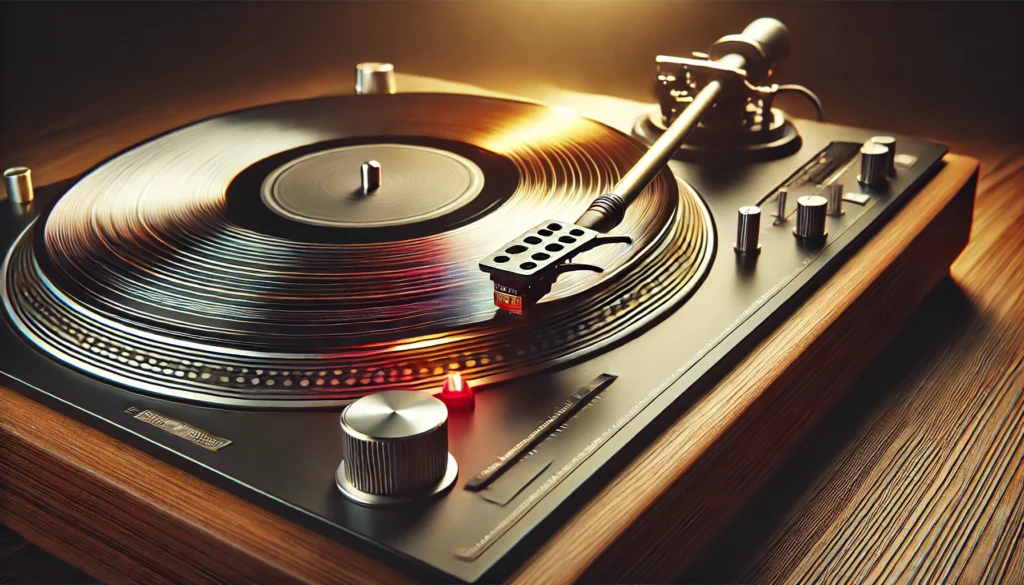
Now that we know the parts, let’s talk about how these bad boys actually work. It’s pretty fascinating stuff, if you ask me!
So, you place your vinyl on the platter, and the motor starts spinning it at a specific speed (usually 33 1/3 or 45 RPM). As the record spins, the stylus rides along in the grooves.
These grooves aren’t just for show – they’re actually tiny, intricate patterns that represent the sound waves of the music.
As the stylus moves along these grooves, it vibrates. These vibrations are then converted into electrical signals by the cartridge.
It’s like magic, I tell ya! The first time I understood this process, it blew my mind.
But here’s the kicker – getting all of this to work properly is an art form in itself. You’ve gotta make sure everything is set up just right.
I can’t tell you how many hours I’ve spent adjusting tracking force, anti-skate, and alignment. It’s frustrating as hell sometimes, but when you get it right, oh boy, the sound is worth every second of effort!
And don’t even get me started on maintenance. Keeping your turntable in top shape is crucial.
I learned that the hard way when I neglected to clean my stylus for months. The buildup of dust and gunk nearly ruined one of my favorite records!
Types of Turntables
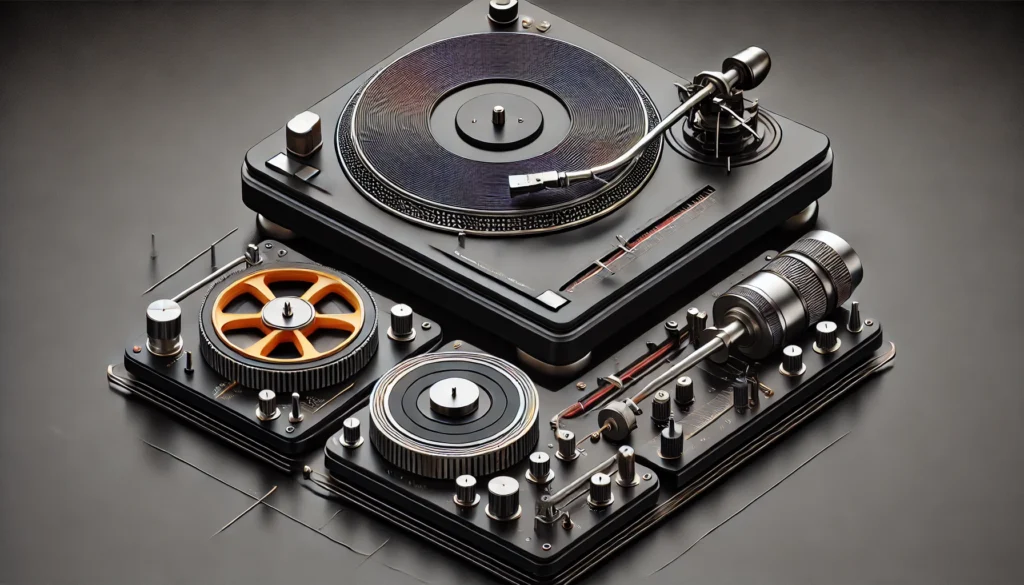
Alright, let’s talk about the different flavors of turntables out there. Trust me, there’s more variety than you might think!
First up, we’ve got belt-drive turntables. These are the darlings of many audiophiles, myself included.
They use a rubber belt to connect the motor to the platter. The idea is that this belt helps isolate the platter from motor vibrations, resulting in cleaner sound.
I remember when I first upgraded to a belt-drive turntable – the reduction in background noise was like night and day!
Then there are direct-drive turntables. These bad boys have the motor directly connected to the platter.
They’re known for their consistent speed and durability, which is why they’re popular with DJs. I used to DJ a bit in college, and let me tell you, trying to scratch on a belt-drive is a recipe for disaster!
Lastly, we have idler-wheel turntables. These are less common nowadays, but they were big back in the day.
They use a rubber wheel to transfer motion from the motor to the platter. They can produce some great sound, but they’re prone to rumble if not maintained properly.
I’ve got an old idler-wheel turntable that I inherited from my dad, and while it sounds amazing when it’s working right, keeping it in shape is a real labor of love.
Difference Between Turntable and Record Player

Now, here’s something that confuses a lot of folks – the difference between a turntable and a record player. Don’t worry, I was in the same boat when I first started out!
A turntable, as we’ve discussed, is essentially the platter, tonearm, and cartridge setup. It’s the core component that actually plays the record.
On the other hand, a record player is a more all-in-one solution. It includes the turntable itself, plus built-in speakers, a phono preamp, and sometimes even a radio or cassette player.
Record players are great for convenience. They’re usually more compact and you don’t need to worry about hooking up external components.
I started with a record player, and it was perfect for getting my feet wet in the vinyl world. But here’s the thing – they’re usually not as high-quality as a dedicated turntable setup.
Turntables, while they require more components (like a separate amplifier and speakers), offer more flexibility and often better sound quality. You can upgrade individual components as you see fit.
I’ve spent years slowly upgrading my setup, piece by piece, and the improvement in sound quality has been incredible.
So, which is better? Well, it really depends on what you’re after.
If you want a simple, all-in-one solution to casually enjoy some vinyl, a record player might be your best bet. But if you’re looking to dive deep into the world of high-fidelity audio and don’t mind a bit of complexity, a turntable is the way to go.
Choosing the Right Turntable
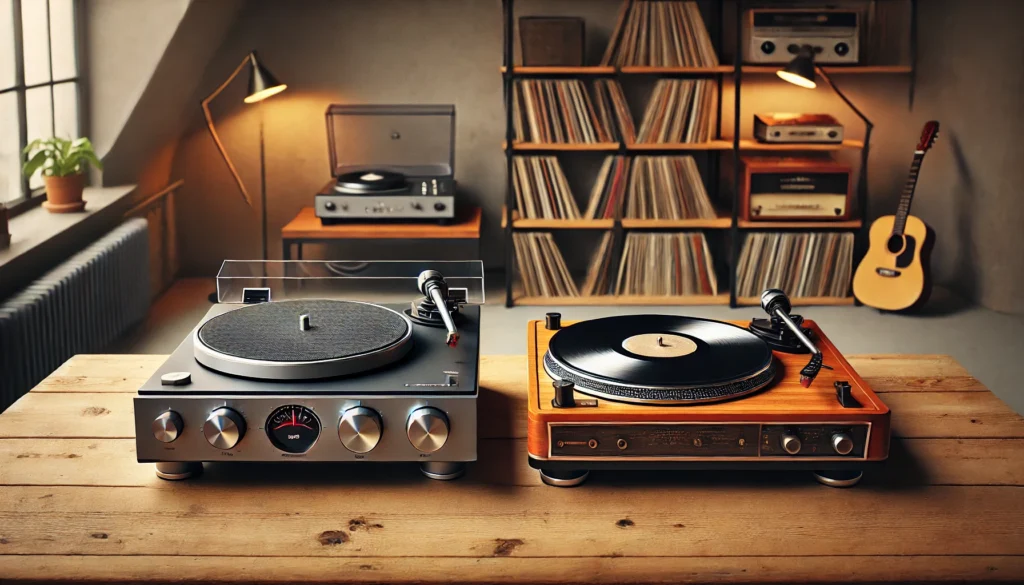
Alright, so you’ve decided to take the plunge and get a turntable. Awesome! But now comes the tricky part – choosing the right one.
Don’t worry, I’ve been through this process more times than I care to admit, and I’ve got some tips for you.
First things first, consider your budget. Turntables can range from under $100 to well over $10,000.
When I started out, I made the mistake of going for the cheapest option I could find. Big mistake! It sounded terrible and actually damaged some of my records.
On the flip side, you don’t need to sell a kidney to get good sound. There are plenty of great options in the $300-$500 range that’ll serve you well.
Next, think about what kind of listening you’ll be doing. Are you a casual listener who just wants to spin some records on the weekend?
Or are you an audiophile who’s going to be critically listening to every note? This will help guide your decision on things like drive type, cartridge quality, and additional features.
Speaking of features, decide what’s important to you. Do you want a built-in phono preamp?
How about USB output for digitizing your vinyl? Automatic operation? These features can be convenient, but they often come at the cost of sound quality.
Now, here’s a contentious topic – new vs. vintage turntables. Both have their pros and cons.
New turntables often come with warranties and modern features, but vintage ones can offer incredible value for money if you know what to look for. I’ve got both in my collection, and I love them for different reasons.
Finally, don’t forget about upgradability. A good turntable should be able to grow with you as your tastes and budget evolve.
Look for models that allow you to easily upgrade the cartridge, platter, or even the tonearm down the line.
Remember, choosing a turntable is a personal decision. What works for me might not work for you.
Take your time, do your research, and most importantly, trust your ears!
Conclusion
Whew! We’ve covered a lot of ground today, haven’t we? From the basics of what a turntable is, to the nitty-gritty of how they work and how to choose the right one.
It’s a lot to take in, I know. But trust me, the world of turntables and vinyl is an incredibly rewarding one to explore.
Remember, at the end of the day, turntables are all about bringing music to life in a way that’s tangible and engaging. There’s something special about the ritual of pulling a record out of its sleeve, placing it on the platter, and dropping the needle.
It forces you to be present with the music in a way that streaming just can’t match.
Whether you’re a seasoned audiophile or just starting your vinyl journey, I hope this guide has been helpful. And hey, if you’ve got any experiences or tips of your own to share, I’d love to hear them!
Drop a comment below and let’s keep the conversation going. After all, the best part of this hobby is sharing our love for music and great sound with others.
Now, if you’ll excuse me, I’ve got some records that need spinning. Happy listening, folks!
